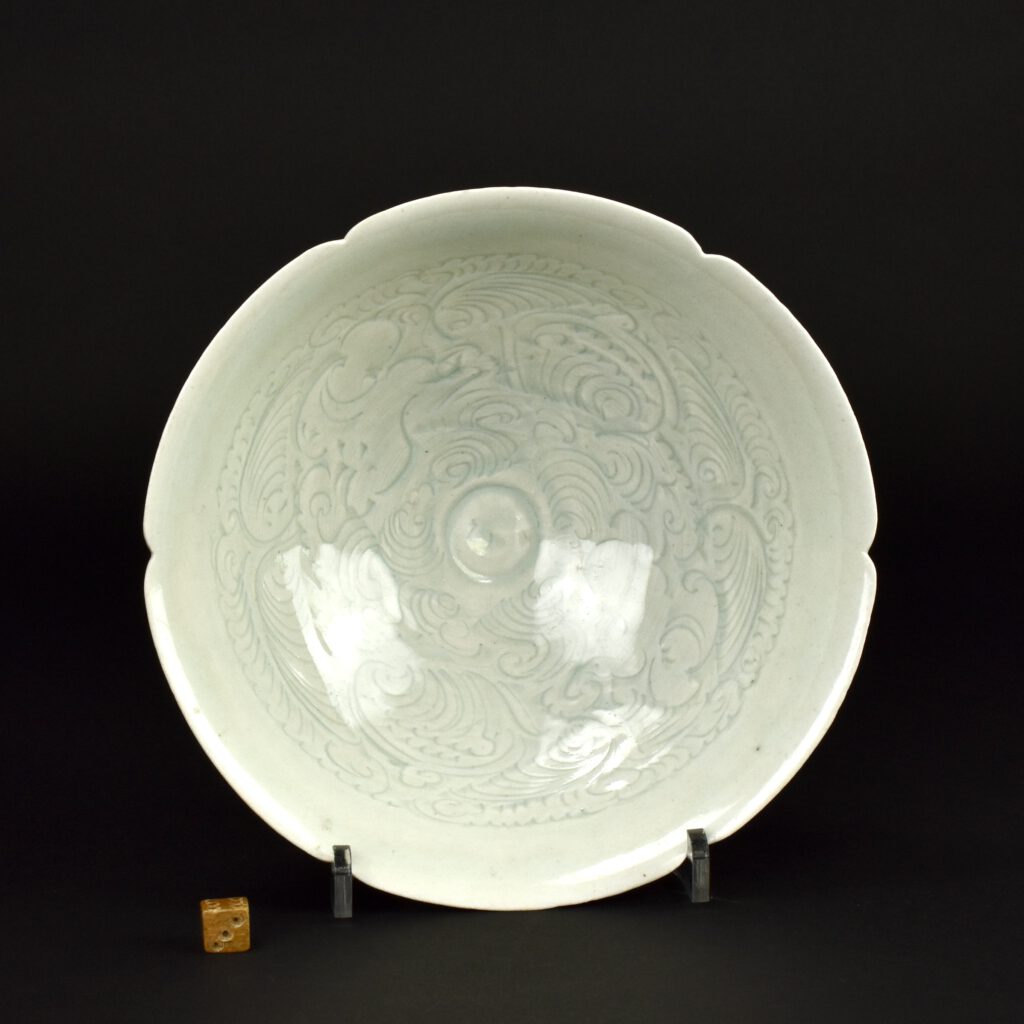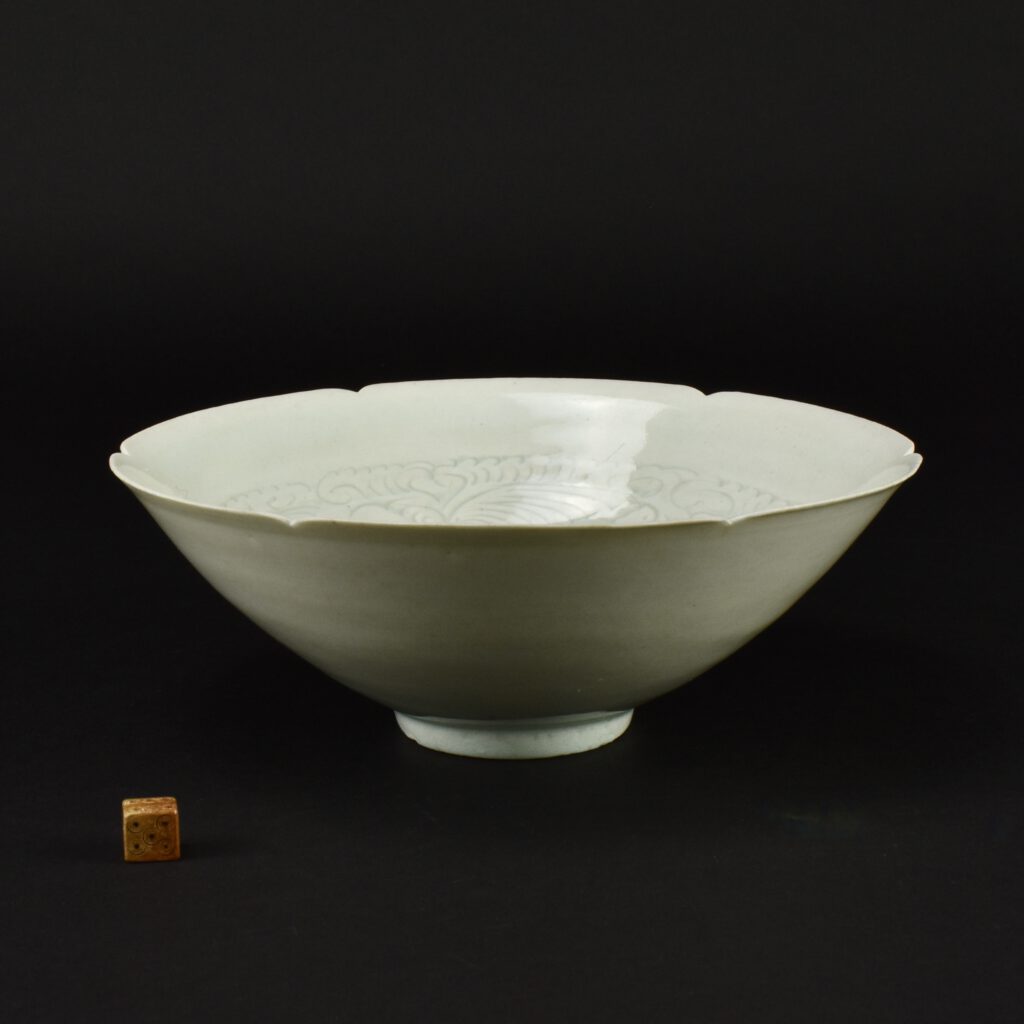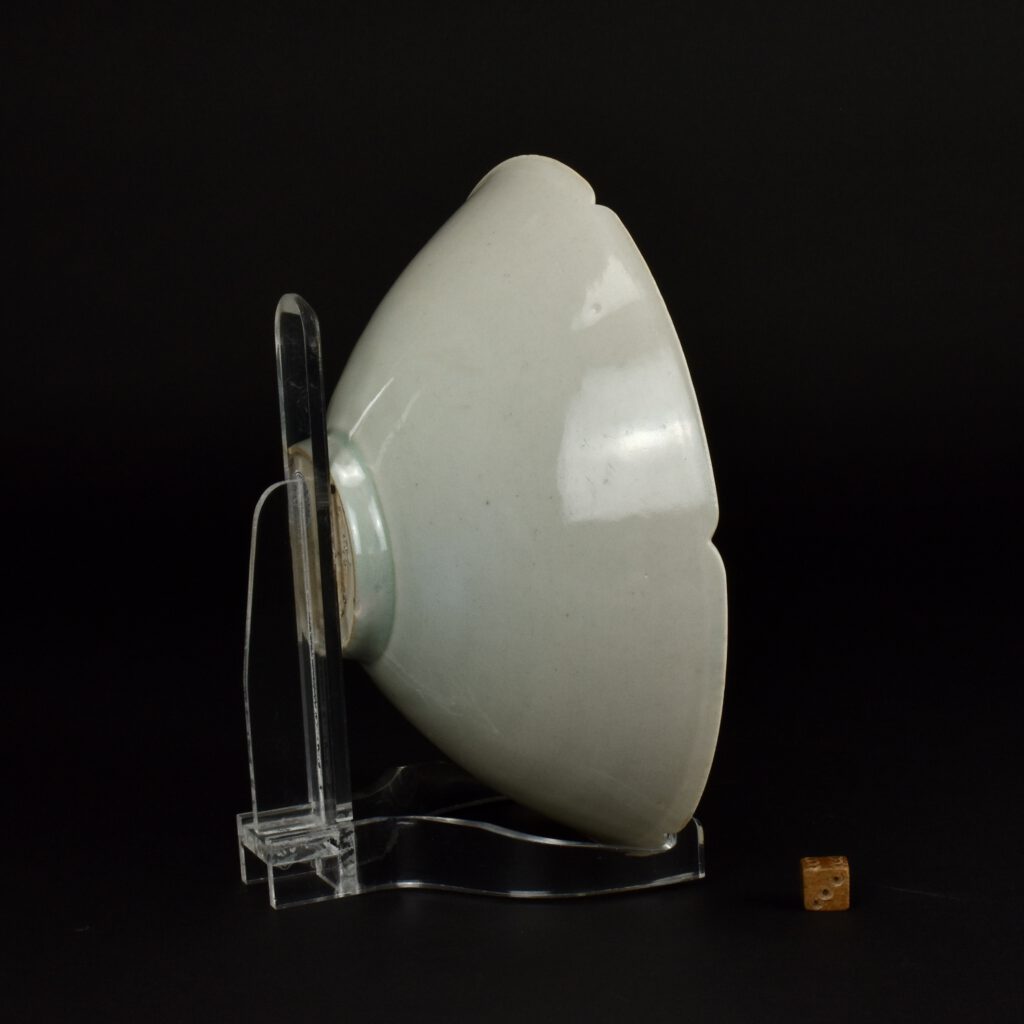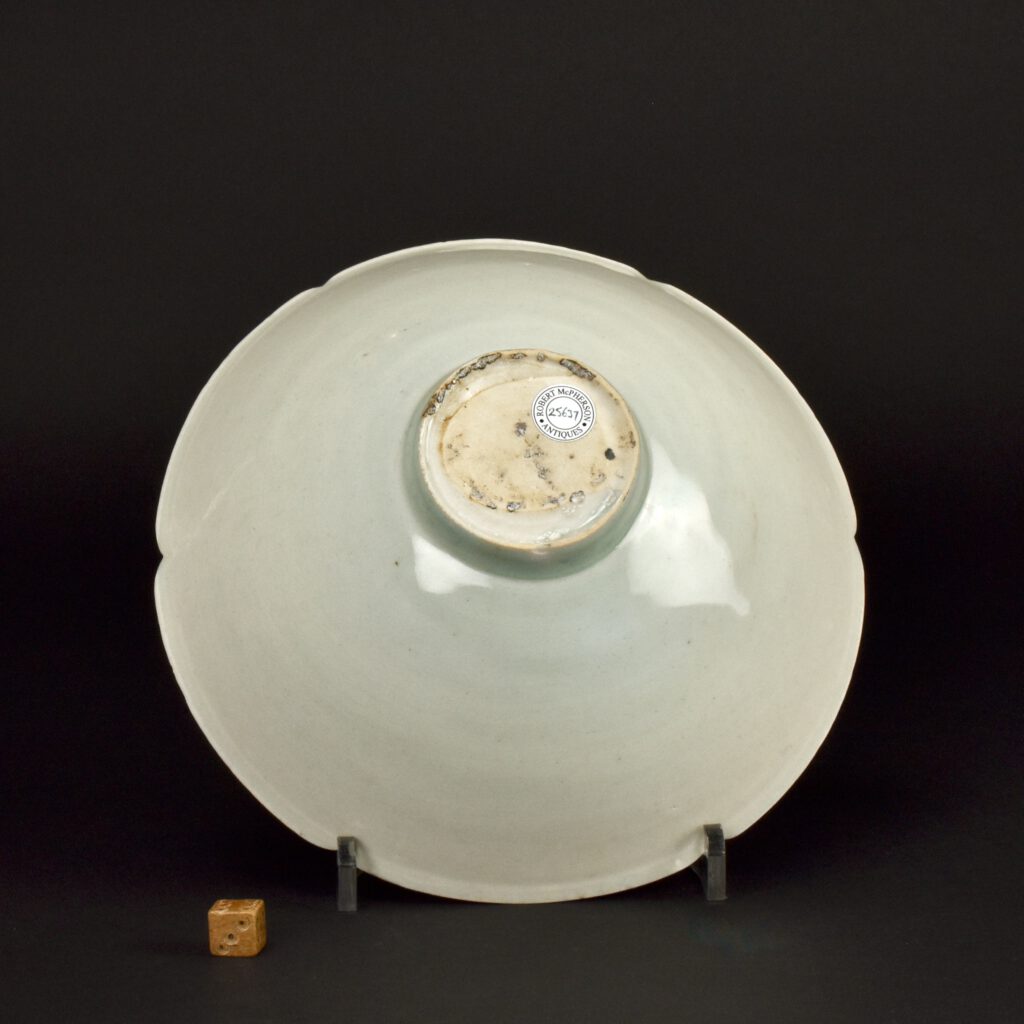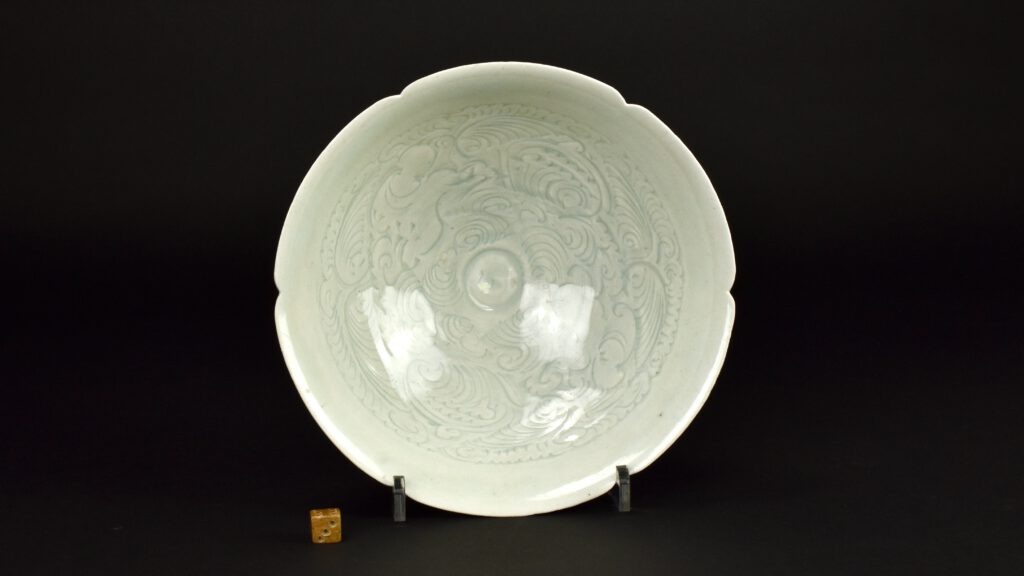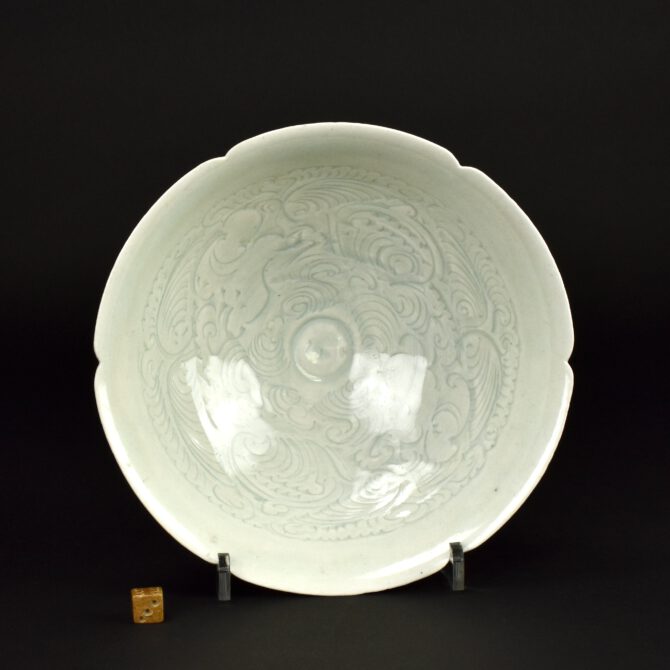
Finely Potted Carved Northern Song Qingbai ‘Boys’ Bowl
A Fine Song Qingbai Porcelain Conical Shaped Porcelain Bowl, probably from the Hutian kilns, Jingdezhen, 11th or 12th Century. Thinly potted, of flaring form, this Song Qingbai porcelain bowl is very well carved with swirling lotus and two boys. The carving is shallow as the porcelain itself is very thinly potted, the carving is fluid yet very precise. The potting, carving as well as the quality of the porcelain indicate that this bowl was produced at on of the best kilns in Jingdezhen, most likely the Hutian kilns. Song bowls with two boys among lotus are a common theme among Qingbai and other wares including Yaozhou celadon. Lotus is one of the most important symbols in the Chinese art. This Buddhist emblem is a symbol of purity, as the perfect pure flower grows out of muddy ponds without a stain or blemish. The words for lotus in Chinese has the same meaning as to bind, connect (in marriage). In connection with ‘boys’ the meaning conveys a fruitful marriage with children, girls are not shown. Lotus is one of the Eight Auspicious Symbols of Buddhism and is the flower used to represent summer. For two similar bowls see : Bright as Silver, White as Snow, Chinese White Ceramics from the Late Tang to Yuan Dynasty page 162, item 39. Another very similar Qingbai bowl is in : Qingbai Ware: Chinese Porcelain of the Song and Yuan Dynasties. More information see ‘References’.
SOLD
- Condition
- In good condition, a very short crack to the rim. See additional photographs below.
- Size
- 20 cm (8 inches)
- Provenance
- N/A
- Stock number
- 25637
- References
- For a closely related Song Qingbai porcelain bowl from the collection of John Drew, see our 'Sold Archive' stock number 25129. For a similar Song Qingbai bowl of this design attributed to Hutian see : Bright as Silver, White as Snow, Chinese White Ceramics from the Late Tang to Yuan Dynasty (Edited by Kai-Yin Lo, Yungmingtang, 1998. ISBN 962-7502-39-1) page 162, item 39. Another very similar Qingbai bowl is in : Qingbai Ware: Chinese Porcelain of the Song and Yuan Dynasties (Edited by Stacey Pierson, Percival David Foundation, 2002. ISBN 0-7286-0339-X
Information
Qingbai Ware :
The earliest known qingbai wares were produced in Jingdezhen in Jiangxi province around the late 10th century and are characterized by faint pale-blue glazes on low, wide forms. Qingbai continued to be enormously popular and highly produced throughout the Song dynasty (960-1279) and was prevalent in the Yuan dynasty (1279-1368), but slackened during the Ming dynasty (1368-1644) until being replaced by tianbai, ‘sweet white’ ware. The initial forms of qingbai were simple bowls and dishes, but by the mid-Northern Song the forms had advanced to include a wide variety of objects used for daily life such as ewers, boxes, incense burners, granary models, vases, jars, sculptures, cups, cupstands, water droppers, lamps, grave wares, and tools for writing and painting. The precedent for the majority of these forms is found in earlier metalwork and lacquer and Rawson has suggested that the imitation of silver was the primary force behind the production of white wares, including qingbai. See our `History` section for more information about Song Porcelain and Stoneware by Mindy M. McDonald.
Lotus :
The lotus is one of the most important symbols in the Chinese art. This Buddhist emblem is a symbol of purity, as the perfect flower grows out of muddy ponds without a stain. The words for lotus in Chinese has the same meaning as to bind, connect (in marriage). In connection with 'boys' the meaning conveys a fruitful marriage with children. It is one of the Eight Auspicious Symbols of Buddhism and is the flower used to represent summer.
A Closely Related Song Qingbai Boys Bowl
From the Collection of John Drew.
Robert McPherson Antiques - Sold Archive.



